4-Nonylphenylboronic acid
- CAS NO.:256383-45-6
- Empirical Formula: C15H25BO2
- Molecular Weight: 248.17
- MDL number: MFCD02093070
- EINECS: 000-000-0
- SAFETY DATA SHEET (SDS)
- Update Date: 2024-11-20 11:41:24

What is 4-Nonylphenylboronic acid?
Description
Nonylbenzeneboronic acid (CAS 256383-45-6) is a potent and selective inhibitor of fatty acid amide hydrolase (FAAH, the enzyme which hydrolyzes and deactivates anandamide), IC50=9.1 nM1. Also inhibits monoacylglycerol lipase (MAGL, the enzyme which hydrolyzes 2-arachidonoyl-glycerol), IC50=7.9 μM.1
The Uses of 4-Nonylphenylboronic acid
4-n-Nonylbenzeneboronic acid is a potent inhibitor of fatty acid amide hydrolase. It is also able to inhibit monoacylglycerol lipase (MAGL), which hydrolyzes 2-arachidonoyl glycerol (2-AG).
in vitro
4-(n-nonyl) benzeneboronic acid was synthezed as a potent inhibitor of faah, with an ic50 of 9.1 nm. 4-(n-nonyl) benzeneboronic acid was also found to be able to inhibit magl, which could hydrolyze 2-arachidonoyl glycerol, but at around 1000-fold higher concentration. moreover, it was found that as the most potent para-substituted compound, 4-(n-nonyl) benzeneboronic acid showed rather high pka of 9.1. in addition, the molecular docking was utilized to gain insight on the faah binding mode of 4-(n-nonyl) benzeneboronic acid and a putative binding mode was observed [1].
References
1) Minkkila?et al.?(2008),?Discovery of boronic acids as novel and potent inhibitors of fatty acid amide hydrolase; J. Med. Chem.,?51?7057
Properties of 4-Nonylphenylboronic acid
| Melting point: | 82-85°C |
| Boiling point: | 385.3±35.0 °C(Predicted) |
| Density | 0.97±0.1 g/cm3(Predicted) |
| storage temp. | -20°C |
| solubility | Soluble in DMSO (up to 30 mg/ml) |
| form | solid |
| pka | 8.72±0.16(Predicted) |
| color | White |
| Water Solubility | Insoluble in water. |
| BRN | 8215118 |
| Stability: | Stable for 1 year from date of purchase as supplied. Solutions in DMSO may be stored at -20°C for up to 2 months. |
| CAS DataBase Reference | 256383-45-6(CAS DataBase Reference) |
Safety information for 4-Nonylphenylboronic acid
| Signal word | Warning |
| Pictogram(s) |
 Exclamation Mark Irritant GHS07 |
| GHS Hazard Statements |
H315:Skin corrosion/irritation H319:Serious eye damage/eye irritation H335:Specific target organ toxicity, single exposure;Respiratory tract irritation |
| Precautionary Statement Codes |
P261:Avoid breathing dust/fume/gas/mist/vapours/spray. P304+P340:IF INHALED: Remove victim to fresh air and Keep at rest in a position comfortable for breathing. P305+P351+P338:IF IN EYES: Rinse cautiously with water for several minutes. Remove contact lenses, if present and easy to do. Continuerinsing. P405:Store locked up. |
Computed Descriptors for 4-Nonylphenylboronic acid
New Products
Tert-butyl bis(2-chloroethyl)carbamate (S)-3-Aminobutanenitrile hydrochloride N-Boc-D-alaninol N-BOC-D/L-ALANINOL N-octanoyl benzotriazole 4-Hydrazinobenzoic acid 3,4-Dibenzyloxybenzaldehyde 3-Nitrobenzaldehyde 1,1’-CARBONYLDIIMIDAZOLE R-2-BENZYLOXY PROPIONIC ACID 1,1’-CARBONYLDI (1,2-4 TRIAZOLE) 4-HYDROXY BENZYL ALCOHOL 3-NITRO-2-METHYL ANILINE (2-Hydroxyphenyl)acetonitrile 5-BROMO-2CYANO PYRIDINE 5,6-Dimethoxyindanone 5-broMo-2-chloro-N-cyclopentylpyriMidin-4-aMine 2-(Cyanocyclohexyl)acetic acid 4-methoxy-3,5-dinitropyridine 2-aminopropyl benzoate hydrochloride 1-(4-(aminomethyl)benzyl)urea hydrochloride tert-butyl 4- (ureidomethyl)benzylcarbamate diethyl 2-(2-((tertbutoxycarbonyl)amino) ethyl)malonate Ethyl-2-chloro((4-methoxyphenyl)hydrazono)acetateRelated products of tetrahydrofuran
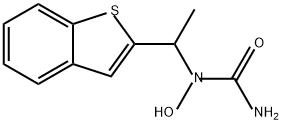


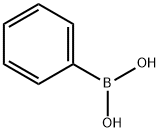
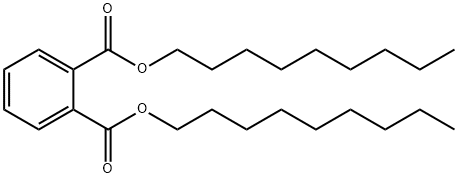
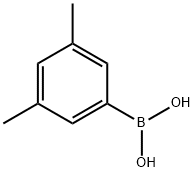
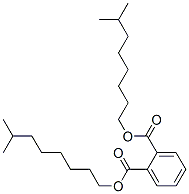
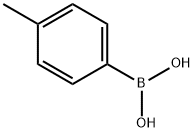
You may like
-
 4-n-Nonylbenzeneboronic acid CAS 256383-45-6View Details
4-n-Nonylbenzeneboronic acid CAS 256383-45-6View Details
256383-45-6 -
 55441-95-7 99%View Details
55441-95-7 99%View Details
55441-95-7 -
 N-Vinylformamide 99%View Details
N-Vinylformamide 99%View Details
13162-05-5 -
 Chloro Uracil 1820-81-1 99%View Details
Chloro Uracil 1820-81-1 99%View Details
1820-81-1 -
 207557-35-5 99%View Details
207557-35-5 99%View Details
207557-35-5 -
 2-ethyl-6-methyl-3-hydroxypyridine succinate 99%View Details
2-ethyl-6-methyl-3-hydroxypyridine succinate 99%View Details
127464-43-1 -
 2-ETHYLPYRIDINE 100-71-0 99%View Details
2-ETHYLPYRIDINE 100-71-0 99%View Details
100-71-0 -
 181228-33-1 (S)-Methyl 3-amino-2-((tert-butoxycarbonyl)amino)propanote Hydrochloride (DAP-OMe. HCl) 99%View Details
181228-33-1 (S)-Methyl 3-amino-2-((tert-butoxycarbonyl)amino)propanote Hydrochloride (DAP-OMe. HCl) 99%View Details
181228-33-1